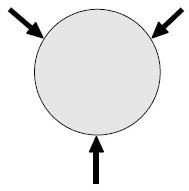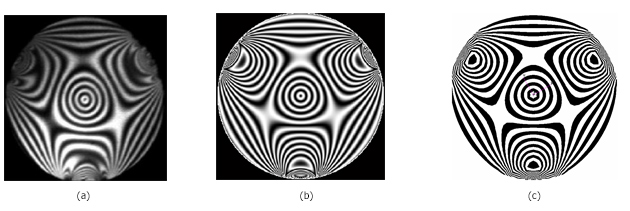Stress-induced birefringence analysis predicts optical performance due to birefringent reafractive index changes due to stresses in transmissive optics.
SigFit uses the stress results from finite element analysis in combination with stress-optic properties to generate BIR and CAO INT files representing integrated birefringence. The BIR and CAO files are generated using Jones calculus along integration paths. The BIR and CAO files may be imported to Code V for optical analysis.
Research performed at the University of Rochester in Rochester, NY used SigFit to make numerical predictions of retardance. A thick window loaded as shown in Figure 1 was tested and simulated by an analytical solution and a finite element analysis post-processed by SigFit.

Figure 1: Loading configuration of a BK7 window 12.7 mm in diameter and 9.25 mm thick.
Results of the test, analytical solution, and finite element analysis post-processed by SigFit are shown in Figure 2.

Figure 2: Figures of half-wave retardance from (a) test data, (b) 2D analytical solution, and (c) a finite element analysis post-processed by SigFit. Figures taken from Beckley, Amber Michelle, Polarimetry and Beam Apodization using Stress-Engineered Optical Elements, University of Rochester, Rochester, NY, 2012.
